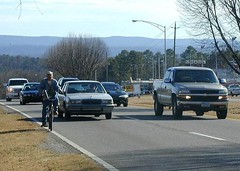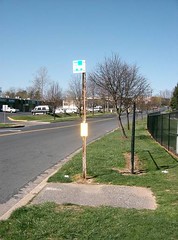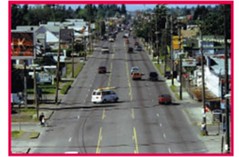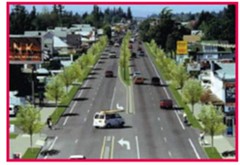Streets are for everyone

Posted July 30, 2008 at 1:28PM
How many of us have wished for a sidewalk in order to feel safer and more comfortable?  Or have viewed 6-lane arterial roads, wondering how anyone ever manages to walk across? How many of us have ridden bikes and needed more road space in order to share a roadway with cars? How many of us have waited at a bus stop with no place to sit or be sheltered from the weather?
Or have viewed 6-lane arterial roads, wondering how anyone ever manages to walk across? How many of us have ridden bikes and needed more road space in order to share a roadway with cars? How many of us have waited at a bus stop with no place to sit or be sheltered from the weather?
Just about all of us, I’m guessing.
NRDC belongs to a coalition called Complete Streets that is trying, with a growing number of successes, to do something about it. My friend Barbara is one of their stalwarts. Their objective can be simply stated: Foster streets that are “safe, comfortable and convenient for travel via automobile, foot, bicycle, and transit.”
Complete streets advocates believe that we can integrate thoughtful design into 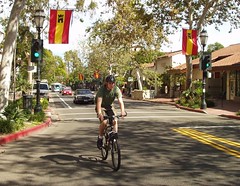 our roadways from the beginning, with features like sidewalks, shade trees, comfortable transit stops that are easy to walk to, good crosswalks and traffic signals for pedestrians (and medians on wide streets so a walker can pause halfway across if need be), and bike accommodations.
our roadways from the beginning, with features like sidewalks, shade trees, comfortable transit stops that are easy to walk to, good crosswalks and traffic signals for pedestrians (and medians on wide streets so a walker can pause halfway across if need be), and bike accommodations.
For decades, civil engineers have focused their efforts on making streets safe and comfortable for cars. Nothing wrong with that, as one goal of a multi-modal strategy. But as the only goal? Not so good. As stated on the coalition’s website, “creating complete streets means transportation agencies must change their orientation toward building primarily for cars. Instituting a complete streets policy ensures that transportation agencies routinely design and operate the entire right of way to enable safe access for all users.”
The coalition also stresses that, since each complete street is unique, it is impossible to give a single description. A complete street in a rural area will look quite different from a complete street in a highly urban area. But both are designed to balance safety and convenience for everyone using the road.
Since so many of our roadways today are anything but complete streets, retrofitting must be one of the orders of the day. Here’s a great visioning demonstration from Oregon of how it can be done:
This is hardly something to feel discouraged about, because the cause is making great progress. The website reports complete streets policies endorsed by the US Conference of Mayors and adopted by communities as different as Buffalo and Charlotte. The group’s latest newsletter reports progress in Scottsdale and Dayton. A complete streets bill has also been introduced in the US House of Representatives.
Perhaps most significantly, the policy has been picked up by the Institute of Traffic Engineers. ITE ran an article in their newsletter on the subject co-authored by Barbara McCann and former City of Chicago transportation engineer John LaPlante.
So I sense a groundswell in the making, and I’m glad good people are on the job. Do visit their site and check them out. Me? I’m out for a bike ride.
Many thanks to the Complete Streets Coalition for graciously allowing my use of their photos.
